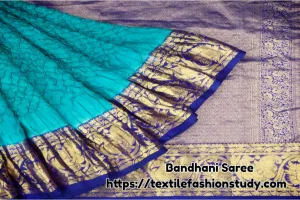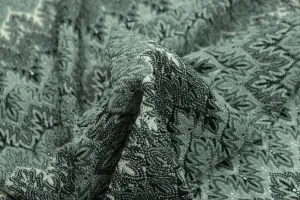Table of Contents
What are vegetable fibers?
Vegetable fibers are organic fibers that are derived from various plant components, including the stem, leaves, and seeds. However, cellulose is a chemical component of this fiber, which is why it is known as cellulosic fiber. Plants’ strength and structure come from cellulose, a complex carbohydrate. Different fiber structures include different amounts of cellulose. Plant fibers come in a variety of forms, including cotton, hemp, jute, flax, abaca, pia, ramie, sisal, bagasse, and banana. This fiber offers a wide range of advantages in its field of use. Compared to synthetic fibers, the majority of them are renewable, biodegradable, and environmentally beneficial.
In general, these fibers are employed in the production of clothes, paper, and building materials, and dietary fiber is crucial to human nutrition. It possesses exceptional physical, chemical, and mechanical qualities that make it suitable for use in the production of both apparel and other goods. To make it practical for everyday use, several spinning, weaving, knitting, and clothing manufacturing processes are used.
Types of Vegetable Fibers
There are different types of vegetable fiber that come from the stem, leaves, and seeds of the plant. The following is an example of vegetable fibers. They are-
Bast Fibers
Bast fibers are one of the plant fibers, and these fibers are obtained from the plant’s stem. These fibers are famous for their strength and durability. The following are examples of bast fibers. They are-
- Flax Fiber
- Hemp Fiber
- Jute Fiber
- Ramie Fiber
- Kenaf Fiber
- Isora Fiber
- Banana Fiber
Leaf Fibers
This is another type of vegetable fiber. Basically, these fibers are obtained from the leaves of plants. These fibers have a rough texture as well as being stiff in nature. The following are examples of leaf fibers. They are-
- Sisal Fiber
- Henequen Fiber
- Pineapple Fiber
- Abaca Fiber
- Curaua Fiber
- Piasava Fiber
- Fique Fiber
Seed Fibers
We know about cotton, which is the most used fiber for producing clothing. The fibers that are obtained from the seeds of plants are called seed fibers. The vital properties of this type of fiber are that they are soft and have a smooth texture. There are some examples of seed fibers. They are-
- Cotton Fiber
- Kapok Fiber
- Brazil nut Fiber
Fruit Fibers
Fruit fibers are other derivatives of plant fiber. When the fibers are obtained from the fruits of plants, they are called fruit fibers. They are suitable for making ropes and brushes. The example of fruit fibers is as follows:
- Coconut Fiber
- Oil Palm Fiber
- Assai Fiber
Stalk Fibers
Stalk fibers are obtained from the stalk of the plant. The example of stalk fibers is as follows:
- Wood Fiber
- Bamboo Fiber
- Grass Fiber
- Barley Fiber
- Rice Straw Fiber
- Wheat Straw Fiber
- Bagasse Fiber
Common Vegetable Fibers Overview
In the above, I have listed different plant fibers according to their types. Now, I like to write about the properties, uses, application area, advantages, and disadvantages of each vegetable fiber. The following are the most popular examples of vegetable fibers: They are-
- Cotton Fiber
- Flax Fiber
- Hemp Fiber
- Jute Fiber
- Sisal Fiber
- Coir Fiber
- Bamboo Fiber
- Ramie Fiber
- Kenaf Fiber, and
- Abaca Fiber
Cotton Fiber
Cotton is the most common vegetable fiber used in the textile industry. It is a seed fiber. It is a cellulosic fiber that is well-liked for its fluffy and silky feel. Cotton is available in several grades. Depending on how long its staple is, cotton fiber is categorized.
Cotton fiber is important. Clothing is made from natural cotton fiber because it has the diverse and desirable qualities that are needed. The textile industry uses it the most and values it as a key fiber.

Cotton Fiber Properties: The following are the properties of cotton fiber: They are-
- Comfort and Softness: Cotton fibers have a smooth, soft feel. Because cotton fibers have a built-in capacity to breathe naturally, the clothing made from them feels good on the skin and helps to keep the body dry and cool.
- Absorbency: It is very good at absorbing moisture. We are aware that the property of absorbency aids in comfort maintenance and inhibits bacterial and odor growth. This quality makes them efficient at removing moisture and perspiration from the body.
- Strength and Durability: The tensile strength of this fiber is good. It is a strong fiber because of its ability to survive repeated washings without losing its integrity, assuring the durability of textile items.
- Versatility in Processing: Cotton fibers are processed in different stages of cloth manufacturing, including spinning, weaving or knitting, wet processing, and garment making. This fiber is spun into different yarns to produce various cotton fabrics such as poplin, voile, denim, jersey, and more. Cotton fibers are easy to dye with a wide range of vibrant colors in textile products.
Uses of Cotton Fiber: Cotton fibers are used widely for their versatile properties. The followings are the most common using area of cotton fiber. They are-
- Clothing and Apparel: Cotton fibers are mostly used in the production of clothing and apparel, including t-shirts, shirts, polo shirts, skirts, pants, underwear, and baby wear. It is a popular choice for daily use due to its breathability, suppleness, and comfort.
- Home textiles: Cotton is used to make a variety of home textiles, including sheets, towels, bed linens, bathrobes, and curtains. They are excellent materials for home textile production because of their softness and absorbency qualities.
- Medical and hygiene items: Cotton, which is hypoallergenic and mild by nature, is used to make a variety of medical and hygiene products, including bandages, swabs, surgical dressings, cotton pads, tampons, and diapers.
Advantages of Cotton Fiber: There are different advantages of cotton fiber in use. The followings are the most common advantages of cotton fiber. They are-
- Cotton fiber is natural and renewable.
- It gives comfort to wear and has excellent breathability.
- It is hypoallergenic and skin-friendly fiber.
- Lastly, it is comparatively cheap in price than other fiber products.
Disadvantages of Cotton Fiber
- Cotton has wrinkling properties and it shrinks when exposed to high temperatures. It needs to take extra care when it uses.
- Cotton has absorption properties and it takes a long drying Time.
Flax Fiber or Linen Fiber
Flax fiber is also known as linen fiber. The source of linen is the stem of the flax plant. It is well known for its strength, coolness, durability, and natural luster.
Importance of Flax Fiber: Flax fibers are vegetable fiber and it has desirable properties and versatility due to this reason it is used over the centuries for different applications.

Flax Fiber Properties: Flax fibers have different physical and chemical properties. The followings are the properties of flax fiber. They are-
- Strength and Durability: This fiber is well-known for having a high tensile strength, which makes it tough and long-lasting.
- Moisture Absorption and Quick Drying: It has great moisture absorption capabilities and dries quickly, providing comfort and halting the development of bacteria and odor.
- Breathability Properties: Flex is the greatest option in this situation since it has exceptional breathability properties. Breathability and Thermoregulation: The cloth user needs a fabric that is permitting air circulation and heat dissipation. Additionally, it regulates heat and moisture, which aids in keeping the body at a reasonable temperature.
- Natural sheen: It has a natural sheen and is used to make textiles that are opulent and sophisticated.
Uses of Flax Fiber: Flax fiber has huge applications in manufacturing garments. The following are the major application area of flax fiber. They are-
- Textiles and apparel: Flax fiber is strong, long-lasting, and breathable enough. It is frequently employed in the production of many different types of clothes, including linen garments, shirts, skirts, suits, and home materials.
- Home Furnishings: It is used to make a variety of home furnishings, including tablecloths, curtains, and upholstery textiles as well as bed linens. But it gives the interior design a sense of elegance.
- Industrial Uses: It has a wide range of industrial uses, including the production of technical textiles, reinforcing materials, and automobile interior components.
Advantages of Flax Fiber: The followings are the advantages of flax fiber uses. They are-
- It is a sustainable fiber and environmentally friendly.
- Flax fiber has enough strength and it has durability properties.
- It has a breathability property that allows air circulation and moisture absorption and Comfort.
Disadvantages of Flax Fiber: There are some disadvantages of linen fiber. They are-
- Flax fiber has wrinkling characteristics and it has a tendency to wrinkle easily which needs to take extra care.
- Limited Color Options: Flax fiber coloration has limited options.
Hemp Fiber
Hemp fiber is a natural fiber and it is made from the stem of the Cannabis sativa plant. This fiber is well known for its strength, versatility, durability, softness, and natural resistance to pests and mold.
Importance of Hemp Fiber: Hemp fiber is environmentally friendly and has various beneficial properties.
Hemp Fiber Properties: The properties of hemp fiber are given below.
- Strength and Durability: It has the qualities of a robust and durable fabric.
- Breathability and Moisture Absorption: Excellent breathability and moisture absorption properties are also present in this material.
- Thermal Regulation: It has the ability to regulate body temperature, keeping the body warm in cold regions and cool in hot situations.
- Hypoallergenic and antibacterial: It possesses inherently antimicrobial qualities that prevent the formation of germs and fungus.
Uses of Hemp Fiber: The followings are the application area of hemp fiber. They are-
- Textiles and apparel: Hemp fiber is utilized in the production of a variety of textile and apparel products, including clothes, footwear, purses, and accessories.
- Home Furnishings: Making home furnishings is another use for hemp fiber. Hemp fiber is used to make a variety of home furnishings items, including bedding, upholstery textiles, curtains, and carpets.
- Paper and packaging: This fiber has widespread use because to its durability, strength, and environmental friendliness. Paper and other materials for packaging are made with it.
- Building and construction products: Hempcrete, an environmentally friendly concrete substitute, insulation, and composite materials are all created from hemp fiber.
Advantages of Hemp Fiber: The advantages of hemp fiber are given below:
- Sustainability and Environmental Friendliness
- Strength and Durability
- Versatility and Adaptability
Disadvantages of Hemp Fiber: The followings are the disadvantages of hemp fiber. They are-
- Texture and Softness: Flax is a coarser fiber compared to some other fibers and it may not be preferred for certain applications that require a softer feel.
- Limited Color Options: It has limited color options during wet processing.
Jute Fiber
Jute is a natural bast fiber that is derived from the stem of the jute plant. This fiber is well known for its strength, versatility, eco-friendliness as well as natural shine.
Importance of Jute Fiber: Jute is a biodegradable and eco-friendly fiber that gives its versatile use area.
Jute Fiber Properties: The following are the properties of jute fiber. They are-
- Strength and Durability: They are solid and long-lasting because of their great tensile properties. Compared to other fibers, it is more durable.
- Moisture Absorption and Breathability: This fiber is very good at absorbing and allowing moisture to evaporate.
- Biodegradability and Sustainability: This fiber has both of these attributes.
- Heat Resistance: It is capable of withstanding high temperatures and has a feature that makes it resistant to heat.

Uses of Jute Fiber: Jute fiber has a wide application area. The followings are the application area of jute fiber. They are-
- Textiles and apparel: Jute and cotton fibers are combined to create jute cotton yarn, which is then used to create denim and other coarse fabrics.
- Packaging Materials: Sacks, bags, and other packaging materials are frequently made from jute fiber. They are excellent for hauling big items because of their great tensile strength and resistance to ripping.
- Jute fiber is used to make several home furnishings, including rugs, carpets, curtains, and upholstery textiles.
- Applications in Agriculture and Gardening: Jute cloth is used in agriculture and gardening for soil stability, erosion prevention, and plant support.
Advantages of Jute Fiber: The followings are the advantages of jute fiber uses. They are-
- Eco-friendly and Biodegradable
- Strength and Durability
- Versatility and Adaptability
- Availability
- Cheap price
Disadvantages of Jute Fiber: The followings are the disadvantages of jute fiber. They are-
- Susceptible to Moisture Damage: It is susceptible to damage and degradation when exposed to excessive moisture or prolonged wet conditions.
- Limited Color Options: Jute fiber is golden in color and it needs extra care during dyeing and printing.
Sisal Fiber
Sisal fiber is a natural leaf fiber that is obtained from the leaves of the Agave sisalana plant. It is known for its strength, durability, and versatility in use.
Importance of Sisal Fiber: It is a vegetable fiber and it is widely used for to its desirable properties and wide range of applications.
Sisal Fiber Properties: The followings are the properties of sisal fiber. They are-
- Strength and Durability: They are sturdy and long-lasting because to their high tensile strength, which is well recognized.
- Excellent Moisture Absorption and Quick Drying: It quickly dries after being wet. Sisal has a rapid dying time, making it simple to dye.
- Sisal fibers have strong thermal stability and can sustain high temperatures without degrading.
- Natural Texture and Aesthetic Appeal: It has a rougher look and is frequently used to make crafts and home designs.
Uses of Sisal Fiber: The followings are the application area of sisal fiber. They are-
- Rope and Cordage: Due to its strength and durability, it is used to make ropes, twines, and cordage, all of which are often employed in construction, farming, shipping, and other sectors.
- Sisal fiber is used to create a variety of carpets and mats.
- Crafts & Home Decor: This fiber is used to make a variety of crafts and home accents, including lampshades, wall hangings, and baskets.
- Applications in Agriculture and Gardening include plant support, nursery twines, and erosion management.
Advantages of Sisal Fiber: The followings are the advantages of sisal fiber. They are-
- It has enough strength and durability properties.
- It is sustainable and biodegradable.
- Sisal fiber is Versatile and has adaptability.
Disadvantages of Sisal Fiber: The disadvantages of sisal fiber are given below:
- Susceptible to Moisture Damage: It becomes damaged when exposed to excessive moisture or prolonged wet conditions.
- Coarse Texture: It is a coarser fiber and has a coarse texture.
Coir
Made from coconut shells, coir is a fruit fiber. It is frequently used to manufacture mats, ropes, and brushes. Like other vegetable fiber, this fiber is strong.
Bamboo Fiber
The bamboo plant produces bamboo, a stalk fiber. Because of its softness, absorbency, and sustainability, it is a well-liked product that is also environmentally beneficial. This fiber is used to construct a variety of textile goods, including towels, bedding, and garments.
Ramie Fiber
Made from the ramie plant, ramie is a kind of bast fiber. However, it is renowned for its adaptability, strength, and durability. It also has a natural sheen. It is used to create various textiles for upholstery and garments.
Kenaf Fiber
Made from the kenaf plant, kenaf is another type of bast fiber. This fiber is soft and strong enough. Typically, it is employed in the production of textile and paper products.
Abaca
It is a kind of leaf fiber. It also goes by the name Manila hemp. The abaca plant is where this fiber is found. They are frequently used to manufacture rope, twine, and paper because of their strength and inherent roughness.
Characteristics of Vegetable Fibers
There are lots of properties of this fiber. The importance of vegetable fiber is global and remarkable. The followings are the characteristics of vegetable fiber uses. They are-
- Sustainable and Renewable: This fiber is environmentally beneficial because it is made from renewable plant sources. However, compared to synthetic fibers made from petrochemicals, it has a reduced carbon footprint and can support sustainable production methods.
- Biodegradability: Over time, this fiber naturally breaks down without doing any environmental harm. They are environmentally beneficial materials that may be used in place of synthetic fibers because of their biodegradable nature.
- Strong Moisture Absorption: Its strong moisture absorption capabilities render it useless for the production of towels and napkins.
- Versatility and Application Range: It has adaptable qualities that enable it to be used in a variety of sectors, including construction, automotive, paper, textile, fashion, and packaging. This fiber is used to make a variety of goods, including clothes, home decor, ropes, mats, bags, and more, in the textile and fashion industries.
- Low Thermal Conductivity: Due to their difficulty in transferring heat, these fibers exhibit low thermal conductivity characteristics.
- Electrical Conductivity: Because vegetable fibers do not conduct electricity effectively, they have weak electrical conductivity properties.
- Breathability and Comfort: We want to wear clothing that is sufficiently breathable. Among the other vegetable fibers, cotton and linen have good breathability qualities that allow air circulation and moisture absorption capacity. This attribute makes them comfortable to wear and appropriate for warm regions.
- High Tensile Strength: Vegetable fibers have a high tensile strength because they can resist high strain or stress without breaking. This fiber is used to make a variety of long-lasting goods, including ropes and twine.
- Products with a rough texture can be manufactured using this material.
- Health Advantages: As a natural fiber, it offers several advantages over synthetic fiber in terms of health. These fibers are often hypoallergenic and kind to the skin, nevertheless. For anyone with sensitive skin or allergies, this fiber is great.
- Renewable Source: If we consider the origins of vegetable fiber, we can see that natural fibers originate from a variety of plants. So, a vegetable fiber tree is simple to grow and produces fiber from the plant’s stem, leaves, and seeds. It can be replenished.
- Biodegradable: This fiber may be broken down into organic components that improve the soil. It is biodegradable in nature.
- Affordable: This fiber is less costly than other synthetic fibers. This makes this fiber a fantastic option for usage in daily life.
- Cultural and Historical Significance: Vegetable fibers have been utilized for ages in a variety of countries for clothing, crafts, and traditional customs. Vegetable fibers assist to preserve cultural history and handicrafts by promoting their use.
Uses of Vegetable Fibers in Various Industries
Vegetable fiber plays a vital role in different industries. The following are the application areas of vegetable fiber. They are
Textile Industry
- Clothing & Apparel: Vegetable fibers give clothing breathability, comfort, and durability. In the textile business, various fibers including cotton, flax, and hemp are frequently used to make clothes and accessories like denim, linen, and light summer attire.
- Home Furnishings: Vegetable fiber is used in the production of home furnishings. It is used to make a variety of items, including carpets, curtains, and upholstery.
Paper and Packaging Industry
- Paper Production: This fiber may be used to make paper goods since it is strong, flexible, and well-suited for printing. Flax and hemp are two more types of vegetable fiber that are used to make paper, including writing paper, specialty papers, and banknotes.
- Packaging Supplies: Supplies of packaging are required for the shipment of facilities. Jute and sisal are two more types of fiber that are used to create packaging products including sacks, bags, and containers. This product is environmentally friendly and may be used in place of plastic packaging to promote sustainability and lessen environmental impact. It can be used as vegetable fiber packaging material.
Construction Industry
- Insulation Materials: Vegetable fibers provide both thermal and acoustic insulation capabilities, which help building projects be more energy-efficient and soundproof. Fibers from flax and hemp can be used to make building insulation.
- Composite materials and reinforcement: These fibers are used as reinforcement in composite building materials. They can be used as reinforcing panels, roofing materials, or even biodegradable building components, among other things.
- Interior Components: Fibers including flax, sisal, and coir are used to make a variety of interior parts for cars.
- Bio-based Composites: It is included in bio-based composite vehicle parts as reinforcement.
All things considered, each vegetable fiber has special qualities and benefits. Hemp is unique in that it is exceptionally strong, absorbent of moisture, and environmentally friendly. Linen made of flax is renowned for its strength, capacity to absorb moisture and wide range of uses. For its softness, ability to absorb moisture and adaptability, cotton is frequently utilized. Ropes, carpets, and mats are a few examples of products that jute and sisal fibers excel at producing since they call for moderate strength, durability, and environmental friendliness. When choosing a vegetable fiber, take into account the particular specifications and qualities wished for in your planned use.
Importance of Vegetable Fibers in Sustainable Industries
Vegetable fibers play a crucial role in sustainable industries for several reasons. Here are some key reasons highlighting the importance of vegetable fibers in sustainable industries:
- Renewable and Biodegradable
- Reduced Environmental Impact
- Energy Efficiency
- Waste Reduction
- Versatility in Applications
- Support for Sustainable Agriculture
- Social and Economic Impact
Potential Future Developments in Vegetable Fiber Applications
There are a number of promising prospective advancements in the near future in the realm of vegetable fiber uses. These innovations seek to improve the qualities and broaden the variety of uses for vegetable fibers. Here are a few probable advancements in vegetable fiber uses for the future:
- Advanced Textiles
- Nanocellulose Applications
- Composite Materials
- Sustainable Packaging
- Bio-based and Sustainable Products
- Integration of Smart Features
- 3D Printing with Vegetable Fibers
Vegetable fiber uses that might evolve in the future show promise for producing more durable, high-performing materials that are adaptable across many sectors. The realization of these improvements and the promotion of vegetable fiber-based solutions will be greatly aided by ongoing research, technical advancements, and partnerships between academics, industry, and policymakers.
Vegetable Fiber Cultivation Process
Vegetable fiber cultivation is the farming and growing of plants that are produced expressly to produce fiber from their stems, leaves, or other plant components. Some crucial elements of growing vegetables for fiber include:
Selection of Fiber Crops
↓
Soil Preparation and Planting
↓
Crop Management
↓
Harvesting
↓
Fiber Extraction and Processing
↓
Sustainable Practices
↓
Market and Supply Chain
Understanding particular crops, agronomic principles, and fiber processing methods is necessary for the development of vegetable fiber. Vegetable fiber-based goods benefit from overall high quality and sustainability thanks to sustainable agricultural methods and ethical sourcing.
FAQ for Vegetable Fiber
Is cotton a vegetable fiber?
Answer: Yes, cotton is a vegetable fiber.
Is linen a vegetable fiber?
Answer: Yes, Linen is a vegetable fiber.
Is silk a vegetable fiber?
Answer: No, silk is not a vegetable fiber it is a protein fiber.
What is the vegetable fibers example?
Answer: Cotton, hemp, jute, flax, abaca, pia, ramie, sisal, bagasse, and banana are examples of vegetable fiber.
What are the types of vegetable fibers?
Answer: Vegetable fibers are 5 types. They are- bast fiber, leaf fiber, seed fiber, fruit fiber, and stalk fiber.
References:
- Handbook of Natural fibers, Volume 1: Types, Properties and Factors Affecting Breeding and Cultivation Edited by Ryszard M. Kozłowski
- The Chemistry of Textile fibers by R. H. Wardman and R. R. Mather
- Handbook of Textile fibers: Natural fibers by J. Gordon Cook
- Introduction to Textile fibers by V. Sreenivasa Murthy
- Textile Engineering – An Introduction Edited by Yasir Nawab
- Forensic Examination of Fibres, Third Edition Edited by James Robertson, Claude Roux and Kenneth G Wiggins
- A Novel Green Treatment for Textiles: Plasma Treatment as a Sustainable Technology By Chi-wai Kan
- Industrial Applications of Natural Fibres: Structure, Properties and Technical Applications Edited by Jürg Müssig
- Principles of Spinning: Fibres and Blow Room Cotton Processing in Spinning by Ashok R. Khare





